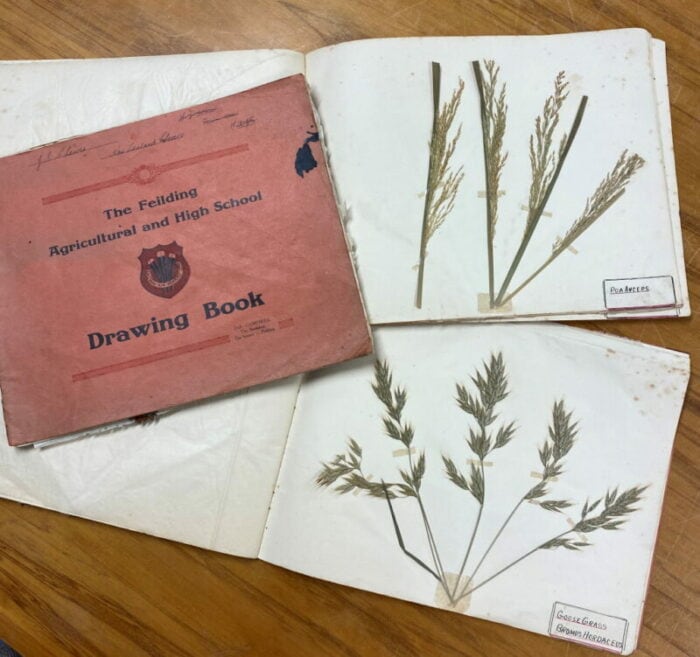From physic garden to pharmacy

In the mid 16th century, the monastery garden progressed to a physic garden – and the inception of today’s pharmacies. Words and photos Marilyn Wightman
Physic herb garden design was a step-up from monastery herb gardens, as apothecaries developed and began the evolution towards the modern-day pharmacy.
The chemist, or apothecarist, manufactured all needed medicines for his clients. Gaining knowledge
of chemical formulas began with an apprenticeship as a young lad and one of his first tasks would be
lifting soil and helping in the herb garden adjacent to the shop. Expensive drugs and remedies were
imported for wealthy clients, but the run-of-the-mill peasants and townsfolk relied on the apothecarist’s
skill to grow and process medicines.
Medicinal education developed and, at the medical school of the University of Padua in Italy, the first
physic herb garden was planted in 1545. A garden with herbs that students could observe, identify and
study. Within 150 years, physic gardens linked to universities were commonplace teaching practice in
the medicinal world. One feature that still endures is the herbarium, a compiled book of pressed herb
plants labelled to show students what was what. A Swedish professor of medicine and botany at Uppsala University, Carl Linnaeus, came up with the binomial system of classifying plants using Latin as a common language in the 18th century. This system of plant identification is used today. First the family name, next the genus name followed by the species name. Take sage – family Apiaceae, genus Salvia and species name officinalis.
By the way
Officinalis identifies any plant as being a medicinal herb.
Herbs in medicine today
Roll on a few hundred years more and the ‘age of scientific reasoning’ began identification of chemical
composition. A bit like analysing the coronavirus structure, herbs have been ‘pulled apart’ to separate
out those chemicals that cured disease and illness. The acid, alkaloid, tannin, saponin and so on structure of plants. The next step was to synthesise and replicate formula using just these chemicals to make modern medicine. From Hippocrates (468–377 BC) and Galen (2nd century AD) medicine has evolved into the present days’ medicinal regime of needing to balance the body’s systems and functions. This was also the basis of Islamic, Chinese and Indian medicine. Herbalists prefer to use herbs in their whole form. The belief that a plant has evolved to contain a network of interlinked chemicals that are gently supportive
medicines reaches back to Hippocrates’ need to ‘balance the body.’
In the 21st century, some medicines still have to be processed using the good old herb plant. Science has yet to replicate the chemical composition of these herbs, so they are cultivated as commercial crops. A
few examples of herbs crucial for modern medicine include arnica, meadowsweet and valerian, originating from Europe, and witchhazel, Mexican yam and American ginseng from North America. From South America, there is quinine, pareira and oca.From Africa, the Madagascar periwinklehas alkaloids used in cancer treatment. Garlic and khella come from the Middle East, gotu kola and rauvolfia from India. Ginkgo, liquorice, ginseng, opium poppy and rhubarb originate in China, and from Australia comes tea tree and gum trees producing eucalyptus.
Research continues to discover other uses for herbs. Many universities teaching medicine and botany have archived herbariums. Some are hundreds of years old. Joseph Banks, sailing with James Cook, gathered plant samples then dried, pressed and labelled these to be both reference guide and record of the many new species and plants discovered. His Banksian Herbarium, now at the British Museum, forms the basis of one of the largest in the world with over five million specimens.
Herbarium practice
Mr Fairey, a Feilding chemist who trained in the 1950s was in the last intake that required students to make their own herbarium. Practising up until his retirement he had a plethora of his medications made for treating common ailments using herbal extracts.
Feilding High School, FAHS, celebrates its centenary this year and an exhibition at the local museum commemorates its work with the young people of Fielding. Included are examples of student work with herbariums composed by 5th form [today’s Year 11] students who were taking the agricultural course. They were required to amass 50 samples of pasture grass and plants suitable for animal feed.
Start your own herbarium
Winter is when ‘time-out’ occurs for the gardener. Researching and reading about these vital herbs and
how they help the world can be a leisurely educational and informative time. You might even design a herb garden that includes medicinal plants you’ve learned how to use. Herbariums are held at Te Papa, as well as Auckland, Christchurch and Otago Museums. Botanic gardens holding herbariums include Gisborne, Dunedin and Christchurch. New Zealand universities with herbariums are Lincoln, Canterbury, Massey and Waikato as well as Unitec in Auckland. While many of these can only be accessed for recognised research and study purposes, some are are available to view online.
